Prevent Hot Tub Freezing: Essential Winter Maintenance Tips
April 24th, 2024
April 24th, 2024
Winter's chill often transforms peaceful backyards into icy wonderlands, but for hot tub owners, this magic can spell trouble. The serene, steaming pool that offers solace during cold months faces a formidable adversary: freezing temperatures. Left unchecked, they can wreak havoc on your cherished oasis, leading to costly repairs and frustrating downtime. As someone who has spent countless evenings soaking under the stars, the thought of a frozen hot tub is more than a mere inconvenience—it's a disruption to a treasured ritual.
Keeping your hot tub from freezing involves more than simply hoping for mild weather or tossing on a cover. It requires a combination of proactive maintenance and vigilance. From ensuring your water heater functions optimally to checking that your cover provides adequate insulation, each step plays a critical role. I recall last winter, when a sudden dip in temperature caught me off guard, and a quick inspection revealed my cover had lost some of its insulating prowess.
To safeguard your investment, understanding the nuances of your hot tub’s mechanics is essential. Familiarizing yourself with the settings and features, along with having a reliable thermometer, provides an added layer of security. This guide will equip you with practical tips and strategies, ensuring your hot tub remains an inviting retreat throughout the frosty months.

As the chill of winter approaches, it becomes crucial to prepare your hot tub for the colder months ahead. While the idea of lounging in steamy water with snowflakes drifting down is tantalizing, neglecting essential winterizing steps could transform this haven into a costly repair project come spring.
Start by giving your hot tub a thorough cleanse. Drain the water completely, ensuring no remnants linger in the pipes. A hot tub line flush is an excellent way to clear out any accumulated debris or lotions that might have settled over the summer. Once drained, inspect the plumbing for any hidden water pockets. Loosening the fittings can help release trapped water, preventing freezing and potential damage.
Next, focus on the cover. A well-fitted, high-quality marine-grade vinyl cover acts as the first line of defense against the cold. Adding a floating thermal blanket beneath the cover can further insulate the water, keeping it warm and reducing energy consumption. Consider this your hot tub's winter jacket, snug and effective.
If you choose to keep your hot tub operational throughout winter, regularly check the water level. A low level can shut down the pump and heater, leading to freezing. Conversely, if you decide to shut it down completely, make sure to run the spa blower briefly to dry out its system. Remove, clean, and store the filters in a dry place until spring.
With these steps, your hot tub will not only survive winter but emerge ready and refreshed for those first warm days of the new season.
When winter's chill begins to nip at your toes, the last thing you want is a hot tub that’s turned into a frozen relic. I remember a neighbor of mine a few winters back, frantic because her hot tub had transformed into a solid block of ice. She overlooked a few key steps, and it cost her dearly. To protect against freezing damage, a little preparation can save a lot of hassle—and money.
Start with vigilant water level checks. Even a slight drop can trigger your pump and heater to shut down, leading to icy mishaps. Regularly top off the water to prevent this. Next, invest in a good quality hot tub cover. I can’t stress enough the impact a well-fitted, insulated cover makes in retaining heat and keeping Jack Frost at bay. It’s like wrapping your hot tub in a cozy winter coat.
Moreover, consider adding a floating thermal blanket beneath the cover. This simple addition creates an extra barrier against the cold, reducing energy usage and providing peace of mind. If you’re planning an extended break from hot tubbing, make sure to drain and dry every nook and cranny. A wet-dry vacuum is your best friend here, ensuring no sneaky pockets of water are left to freeze.
Through these steps, you won't just be preserving your hot tub; you’re safeguarding your sanctuary for those crisp winter evenings when a warm soak is the perfect end to your day.
Winter's icy grip presents a unique challenge for hot tub owners, yet optimizing energy efficiency during this chilly season can keep your spa bubbling without breaking the bank. Start by inspecting your hot tub cover. A snug, undamaged cover is your first line of defense against heat loss. If yours shows signs of wear, consider upgrading to a high-quality marine-grade vinyl cover. It's a small investment that pays off with significant savings.
In addition to a robust cover, a floating thermal blanket can work wonders by adding an extra layer of insulation. This simple addition floats directly on the water's surface, trapping warmth and reducing your energy usage. It's a tried-and-true method that many hot tub enthusiasts swear by for cutting costs.
Keep an eye on the water level as well. A low water level can cause the pump and heater to malfunction, leading to freezing and potential damage. Regularly topping off your hot tub ensures everything runs smoothly, even when temperatures plummet.
Lastly, consider the settings of your hot tub. Lowering the thermostat just a few degrees can result in noticeable savings without sacrificing comfort. If you plan not to use the spa frequently, setting the temperature to a maintenance setting keeps things from freezing while minimizing power consumption. With these practical tips, you can enjoy a worry-free winter soak while your energy bills remain comfortable.
When the frosty air begins to nip at your fingertips, it's time to consider prepping your hot tub for a winter shutdown. As much as it might be tempting to leave everything as-is and hope for the best, proper preparation can save you from costly repairs come spring. A friend of mine learned this the hard way—their oversight resulted in cracked pipes and a hefty repair bill. Let's prevent that fate for your hot tub.
First, take a moment to clean your hot tub thoroughly. Use a line flush product to rid the plumbing of any lingering residues, such as lotions or cosmetics, that can cause issues if left unattended. Once that's done, drain every drop of water from the tub. It’s essential to ensure no water remains in the pipes, as it can freeze and expand, leading to damage. You might need to unscrew some fittings to release trapped water or use a wet-dry vacuum to blow out the jets.
Next, if your hot tub features a blower, run it briefly to expel any residual water. Don't forget about your filters; give them a good clean, dry them, and store them in a safe place. If they’re nearing the end of their lifespan, it might be wise to replace them when you reopen the tub.
Finally, secure your hot tub with a robust cover. This helps keep out debris and insulates against the biting winter air. Remember, while you may not ward off mythical creatures, these steps will shield your hot tub from winter's icy grip, ensuring it’s ready for refreshing dips when the thaw arrives.
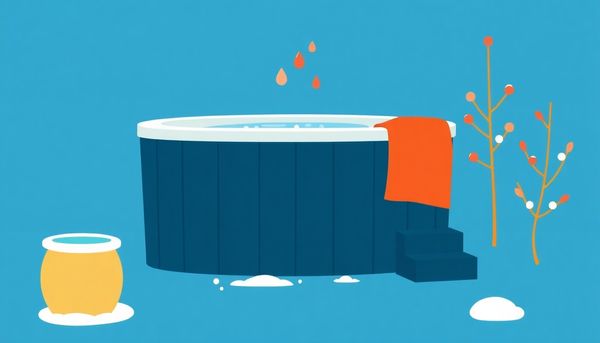
As autumn turns to winter, leaving your hot tub unattended can spell disaster. The secret to sidestepping pricey repairs lies in a meticulous drain and clean routine. Start by flushing the plumbing lines with a specialized hot tub line flush. This step eliminates any lingering lotions or cosmetics that could clog your system over time. It’s much like cleaning your car’s engine – a little effort now saves major headaches later.
Once the lines are clear, it's time to drain the tub. Simply pulling the plug isn't enough; you need to get every last drop. Water left behind can freeze, expanding and cracking vital components. Picture this: a friend of mine, convinced her hot tub was fully drained, later found out the hard way when spring leaks required a hefty repair bill.
After draining, focus on the spa blower. Many neglect this step, yet it’s crucial for a thorough dry-out. Power up the blower for about 30 seconds after shutting off the heater to purge residual water. This ensures no hidden moisture lurks within your system.
Lastly, don’t forget the filter. Remove, wash, and store it in a dry place. If worn out, replace it to avoid any grim surprises come spring. By taking these careful steps, you ensure your hot tub weathers winter's freeze without a hitch, leaving you to enjoy the first soak of spring without a hint of trouble.
The arrival of winter often prompts thoughts of cozy blankets and warm drinks, but for hot tub owners, it also signals the need to prepare their aquatic retreat for the colder months. A well-maintained hot tub can provide a soothing sanctuary amidst the chill, yet neglecting its winter upkeep can lead to a costly spring surprise. To prevent the tub from becoming an ice block, consider a few key steps to winterize it effectively.
Start by giving your hot tub a thorough clean. This includes flushing the lines to remove any hidden grime, which can lead to clogs over time. Once flushed, drain the tub completely. I remember the first time I tackled this task—armed with a wet-dry vac, I discovered residual water lurking in unexpected places. A thorough vacuum ensured every drop was banished, leaving the plumbing dry and safe from freezing.
Next, focus on the cover. A robust, well-insulated cover is your hot tub’s best friend during winter. It acts like a warm blanket, trapping heat and reducing energy consumption. Adding a floating thermal blanket beneath the cover further fortifies against temperature loss. I found this extra layer particularly effective during a particularly harsh winter; it kept my tub invitingly warm while keeping energy costs manageable.
Finally, ensure the filters are clean and stored in a dry place. If they're worn, replace them come spring for a fresh start. By taking these steps, your hot tub will remain in top condition, ready to either hibernate safely or provide warm, inviting soaks throughout the winter.
Winter’s chill can be merciless, transforming a forgotten hot tub into a block of ice that spells disaster for its delicate components. Ensuring your hot tub doesn’t suffer from freezing damage starts long before the first snowflake falls. Begin by inspecting the tub's insulation. Proper insulation acts as a winter coat for your hot tub, preserving warmth and shielding against frigid temperatures. If the insulation is inadequate, now is the time to add foam or replace worn-out sections to enhance its defense.
To further fortify against the cold, maintain a consistent water temperature. A sudden drop could spell trouble, so consider investing in a smart thermostat. Such devices allow you to monitor and adjust your hot tub’s temperature remotely, ensuring it stays within a safe range even if you're away during a cold snap. Additionally, a reliable cover is indispensable. Examine the cover for any signs of wear or damage, and consider adding an extra layer—a floating thermal blanket—to trap escaping heat.
Keeping a vigilant eye on water levels is equally important. In my experience, a seemingly minor dip in water level can cause pumps and heaters to malfunction, leading to disastrous freezing. Regularly check and top up the water to prevent this. Lastly, during exceptionally cold spells, a small heater or space heater placed in the vicinity can provide an extra layer of protection, warming the surrounding air and staving off ice formation. With these precautions in place, your hot tub will emerge from winter unscathed and ready for springtime relaxation.
When it comes to ensuring your hot tub survives winter's icy grip unscathed, maintaining optimal water levels is crucial. A few years back, I learned this the hard way. One particularly frigid January, I neglected to check my hot tub’s water level, thinking everything would be just fine. To my dismay, the water had dipped too low, causing the pump to shut down and ice to form in the pipes. The resulting damage was both costly and time-consuming to repair.
Keeping an eye on the water level might seem like a small task, but it plays a significant role in protecting your equipment. The water should always cover the skimmer by at least half an inch to ensure proper circulation. Not only does this help distribute heat evenly, preventing any risk of freezing, but it also keeps your pump and heater functioning efficiently. If you notice the water dwindling, simply top it up using a garden hose and be sure to add the appropriate chemicals afterward to maintain the right balance.
Regularly topping off the water also has the added benefit of saving on energy costs. With a consistent water level, your hot tub doesn’t have to work overtime to maintain the desired temperature, especially during those bitterly cold nights. This proactive approach ensures your tub remains in perfect condition, ready to provide cozy comfort whenever you're in need of a warm soak under the winter sky.
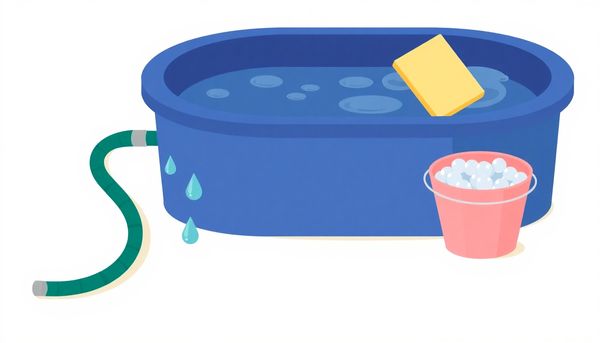
As the mercury plummets and Jack Frost prepares his annual visit, one of the best-kept secrets in hot tub maintenance emerges: the humble thermal blanket. This unsung hero nestles directly atop the water's surface, not unlike a cozy duvet on a chilly night. Its primary mission? To serve as a robust barrier against heat loss, keeping your hot tub toasty and efficient.
Imagine the blanket as an additional layer—like adding an extra winter coat when the wind starts to bite. In my own backyard oasis, this simple addition has proven invaluable, especially when the temperatures flirt with freezing. The thermal blanket essentially traps the heat that might otherwise escape into the brisk air, significantly reducing the workload on your tub's heater. This not only cuts down on energy consumption but also lessens the risk of dreaded freeze damage.
Installation is a breeze, and maintenance requires little more than the occasional shake-out. While it does its job silently, the impact on your energy bill is quite vocal. With the blanket snugly in place, you can rest easy knowing that your hot tub is safeguarded against even the harshest winter spells. So, before the snowflakes start to fall, consider enlisting the help of a thermal blanket to keep your hot tub ready for those magical winter soaks beneath a starry sky.
When the chill of winter arrives, safeguarding your hot tub becomes a mission of both practicality and peace of mind. Proper protection is key to keeping everything in tip-top shape. Start by investing in a robust hot tub cover; it’s like tucking your tub in with a warm, insulating blanket. This cover should be snug, with no gaps for heat to escape, and ideally complemented by a floating thermal blanket beneath it. This duo acts as a formidable shield against the biting cold, trapping warmth and reducing energy costs.
Monitoring your hot tub’s water level is another crucial step. During the winter months, water can evaporate more quickly than you might expect, leading to potential complications if the levels dip too low. A sudden drop can cause the heater and pumps to shut off, leaving your water vulnerable to freezing. Commit to a routine check-up, ensuring everything stays in balance.
For those opting to close their hot tub for winter, drainage is your best friend. Dry out every nook and cranny, from the spa blower to the jet system. A wet-dry vac becomes a handy tool here, ensuring no hidden water pockets can form ice and wreak havoc. Once dried and cleaned, secure the cover, and rest easy knowing you’ve taken steps to protect your investment from winter's icy grip. These efforts ensure your tub will be ready and waiting when spring whispers its return.
When the temperature drops, ensuring your hot tub operates efficiently becomes crucial. A pivotal step in optimizing energy efficiency is insulating your hot tub. Think of it as bundling up your spa against the cold. Many hot tubs come with insulation, but an additional layer can make a significant difference. Wrap the exterior with a foam board or a thermal blanket designed for outdoor spas. This retains heat and reduces the workload on your heater.
Next, consider setting a consistent temperature. Rather than cranking the heat up and down, maintaining a steady, moderate temperature can save energy. It prevents your heater from working overtime to catch up with drastic changes. For example, keeping your tub at a cozy 98 degrees rather than fluctuating between 90 and 104 can be more energy-efficient.
Regular maintenance is also key. Clean filters allow your heating system to function smoothly, reducing energy wastage. On top of that, ensure your jets and pump are free from blockages, as these can cause the system to strain and use more power.
Lastly, timing is everything. Use a timer to schedule heating during off-peak electricity hours, which can lower costs. This strategy also works well with programmable thermostats, which can adjust the temperature based on your usage patterns.
By combining these strategies, you not only prevent your hot tub from freezing but also enjoy a cozy soak without breaking the bank.
As winter approaches, there's a certain charm in preparing your hot tub for the colder months. Whether you’re dreaming of snowy soaks or planning to tuck your spa away until spring, getting ready for winter closures is an essential task. The process is like putting your hot tub into hibernation, ensuring it wakes up in perfect condition when warmer days return.
For those opting to close their tubs, it begins with a thorough clean. You’ll want to flush out the plumbing to eliminate any lingering debris and prevent buildup during the idle months. Draining the tub completely is crucial—any trapped water can freeze, leading to costly damage. Once drained, use a wet-dry vacuum to expel every drop from the jets and pipes. This extra step might seem tedious, but it’s a surefire way to protect your system from the harsh bite of winter.
Next, it’s all about the details. Detach and clean the filters, storing them in a dry place. If they’ve seen better days, consider replacing them when spring arrives. Don’t forget about the blower—run it for about 30 seconds to push out residual moisture, ensuring it’s dry and ready for the chill. Finally, give the interior a good wipe down before sealing it with a sturdy cover. This final act is like giving your hot tub a warm winter coat, shielding it from the elements until you’re ready to enjoy its warmth once again.
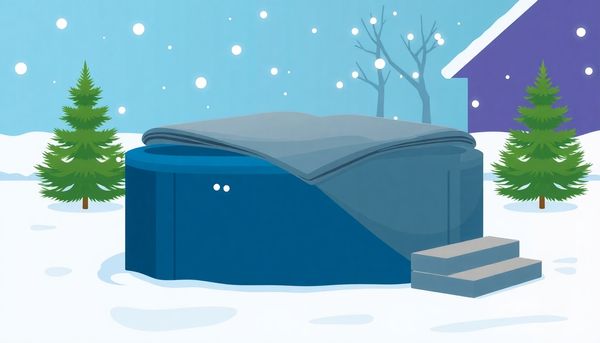
Once the cold weather starts creeping in, the first line of defense for your hot tub is a reliable cover. A friend once likened it to a snug winter coat, perfect for keeping out the icy chill. However, even the sturdiest coat needs a little upkeep. Begin by examining your cover for any signs of wear—cracks, tears, or waterlogging can severely compromise its insulating abilities. A cover with compromised integrity is almost like keeping the door open on a frosty night.
After assessing the damage, swift action is key. Minor tears can often be patched up with heavy-duty vinyl repair kits, a small investment compared to the potential cost of heat loss. If the damage appears beyond repair, consider replacing the cover altogether. High-quality covers utilize marine-grade vinyl and dense insulation, designed to withstand harsh winters while minimizing energy expenditure.
Beyond just a cover, an extra layer can be a game-changer. Floating thermal blankets sit directly on the water's surface, offering added insulation by trapping heat more effectively. I've seen energy bills drop significantly once this simple trick was employed. These blankets are easy to remove and replace, making routine maintenance less of a chore.
Finally, ensure your cover is fastened securely with straps or locks to prevent heat from escaping. A well-maintained cover not only protects your tub but also allows you to enjoy warm soaks under falling snowflakes without the worry of sky-high utility bills.
When winter whispers its arrival with a chilly breeze, hot tub owners face the challenge of battling the elements. A pivotal component of this battle is the hot tub cover, which serves as the first line of defense against the icy fingers of the season. The cover’s quality isn't just about keeping the snow out—it’s about preserving warmth and maintaining efficiency. Consider it the winter coat for your hot tub, and just like you wouldn't head into a blizzard with a thin jacket, your hot tub shouldn't face winter with a flimsy cover.
Begin by examining the outer vinyl for any signs of wear and tear. Cracks or splits can easily let cold air seep in, counteracting your heating efforts. Waterlogged or sagging foam cores also indicate diminished insulation capabilities. If the cover feels unusually heavy, it's likely absorbed water, reducing its insulating effectiveness.
Once, I tried to make do with a questionable cover, thinking a quick duct-tape patch would suffice. That decision cost me dearly in terms of heating bills and a minor freeze-related repair. A high-quality cover not only traps the heat within but also minimizes the strain on your heating system, which could otherwise lead to premature wear.
Investing in a robust cover may seem like a daunting expense initially, but it pays dividends in energy savings and protection over time. After all, a well-insulated hot tub is a haven of warmth in a cold world, ensuring you can enjoy those steamy soaks no matter how fierce the winter roar.
Winter's icy grip can be unforgiving to hot tub covers, and neglecting these essential components can lead to a frosty disaster. A few years ago, my neighbor learned the hard way; her cover had a small tear that went unnoticed, and by mid-January, the tub had transformed into a block of ice. To avoid such mishaps, examining your hot tub cover for any signs of wear and tear is crucial before the cold sets in.
Start by checking for rips, sagging, or waterlogging. These issues not only compromise insulation but can lead to increased energy consumption as heat escapes. If you spot minor damage like small tears or loose seams, don't panic. A vinyl repair kit can work wonders for patching up holes, ensuring your cover remains a strong barrier against the cold. For larger damages, though, it might be wiser to invest in a new cover. Think of it as a long-term investment—quality covers often utilize marine-grade vinyl and robust insulation that can withstand harsh winters.
Moreover, consider adding a floating thermal blanket under the cover. This extra layer effectively traps heat and reduces evaporation, cutting down on those pesky heating bills. By taking these preventive measures, you not only guard against freezing but also ensure that your hot tub remains ready for a dip under the winter stars. It's always better to be safe than sorry, especially when it comes to preserving your backyard sanctuary.
Winter's icy grip can be relentless, but that doesn’t mean your hot tub should fall victim to the freeze. One smart strategy to protect your spa involves employing thermal blankets. These handy additions play a crucial role in maintaining your tub’s temperature by acting as an extra layer of insulation. They float just above the water surface, creating a thermal barrier that traps heat and prevents it from escaping. Think of them like a cozy quilt for your spa, conserving warmth even when the mercury drops.
A friend of mine, living up in the frosty climes of Minnesota, swears by these thermal wonders. She once faced the headache of a mid-winter freeze, which left her with a hefty repair bill and a very unhappy hot tub. After adding a thermal blanket to her winter routine, she noticed not only a significant reduction in energy costs but also peace of mind knowing her tub was safe from freezing.
These blankets are simple to use and can be cut to fit your specific tub dimensions. They work in tandem with your spa cover, effectively minimizing heat loss and reducing the strain on your heating system. This means your hot tub stays toasty, ready for that steamy soak as snowflakes dance around you. With a small investment in a thermal blanket, you ensure your spa remains a warm refuge throughout the winter chill.
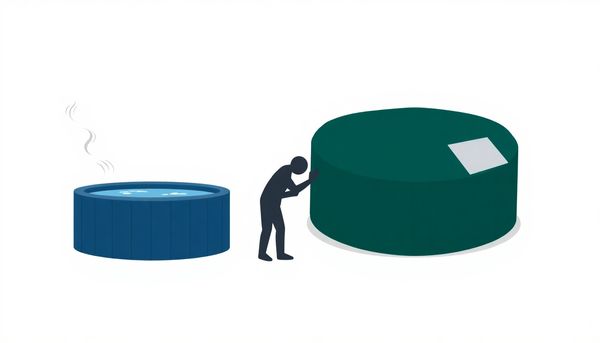
When it comes to nurturing the heart of your backyard oasis, one simple, often overlooked task is vital: checking water levels regularly. Imagine the scene: a chilly evening, steam rising, a serene soak planned. But, uh-oh, the nightmare of a frozen pump strikes because no one noticed the water level was too low. Unlike a fairytale dragon, a hot tub won't roar its problems. Regular monitoring is your saving grace.
Water can evaporate faster than you think, especially when temperatures fluctuate. If levels drop too low, the pump might struggle to circulate water, leading to freezing risks. I once learned this the hard way when I skipped a few weekly checks. I found myself in a scramble, defrosting pipes and regretting every minute of neglect. A quick peek once a week can save you from such a saga.
It's not just about looking; it's about understanding. Check after heavy usage, and pay attention to weather forecasts suggesting colder-than-usual temperatures. If you spot a low level, top it up promptly. An old garden hose works wonders here, as it becomes your trusty ally. Just remember to disconnect it after use to prevent freezing.
By staying vigilant with your water levels, you not only protect your hot tub from damage but also ensure every winter soak is smooth and worry-free. Stay ahead, and let the warmth embrace you without a hitch.
Winter whispers its arrival in many ways, but few are as insistent as the troubles a frozen hot tub can bring. The key to avoiding these icy issues lies in proper maintenance, an often underestimated hero in the tale of hot tub preservation.
Start with regular inspections. During the chillier months, my neighbor, Jim, discovered how crucial these checks are when he found a tiny tear in his cover. That small oversight turned into a hefty heating bill. A vigilant eye on your cover’s condition can prevent heat loss and save money. Remember, it’s not just about keeping the water warm; it’s about keeping it moving. Stagnant water becomes the enemy in freezing temperatures, so ensure your circulation system works flawlessly.
Then there's the filter, often neglected yet vital. A clean filter not only keeps the water pristine but also ensures that the system doesn't overwork itself, which can lead to breakage or inefficiency. Every six weeks or so, give it a clean or replace it if necessary.
Don't overlook those seemingly minor details like checking for leaks, either. Even a small drip can turn into a major problem when temperatures plummet. Tighten loose connections and replace worn-out parts. It’s the little things that, when neglected, pave the way to big repairs come spring.
In the world of hot tubs, a little foresight can save you from a winter of discontent.
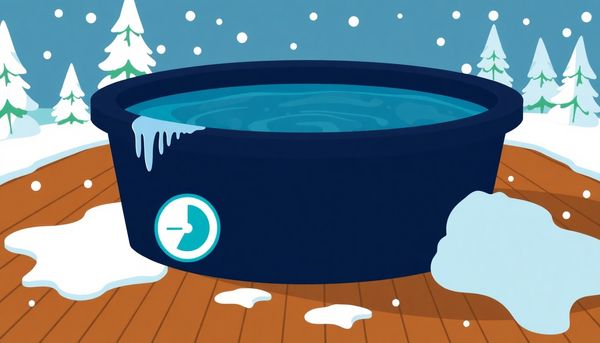
This article provided insights into maintaining your pool. Start your pool care journey today!
Want to become a pool maintenance expert? Our free Pool School course covers everything you need to know about pool care. From basic maintenance to advanced troubleshooting, you'll learn how to:
Join over 10,000 pool owners who have already transformed their pool care routine. Get started with our free Pool School course today!